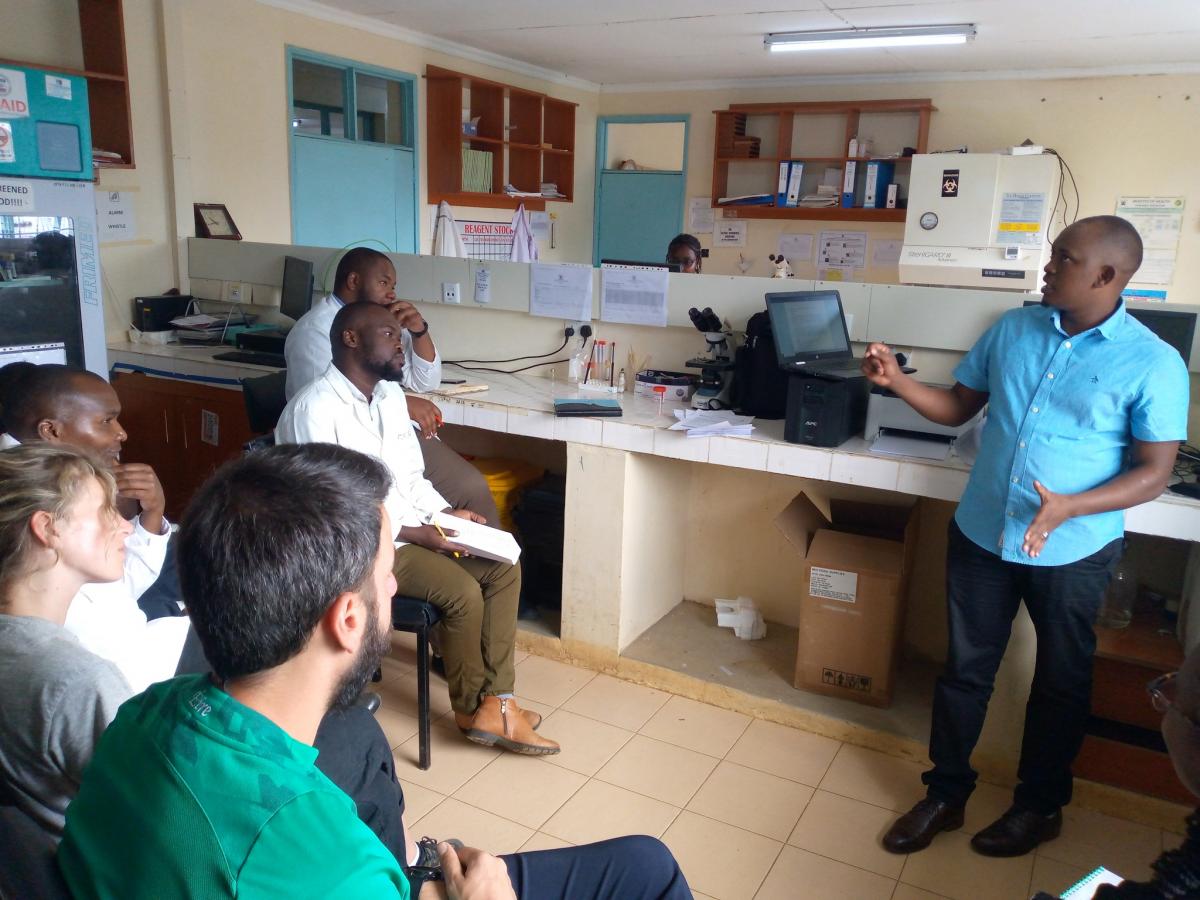Boost To Patient Care (And Humanity) As NTRH Acquires Automated Microbial Identification And Susceptibility Testing Machine
Updated on: Jul 03, 2023
Laikipia County is glad to have advanced in contributing to the world in the fight against antimicrobial resistance (AMR). We (Laikipia County) have upgraded our capacity to carry out microbial identification (ID) and antimicrobial susceptibility testing (AST) using an automated analyzer.
The ID component of the testing enables us to know the exact pathogen that is causing an infection through analysis of an appropriate sample collected from a patient. AST further exposes the pathogen isolated to several test antibiotics in a reagent; to establish which of the antibiotics the disease-causing bacterium is Sensitive to. AST conversely generates knowledge on the antibiotics the specific bacteria are Resistant to
The equipment was received and installed at our laboratory; and the training of laboratory team on the use of the equipment commenced immediately. More advanced trainings will be undertaken for all the clinical staff so that we can achieve the best benefit from this testing capability. With the automated analyzer, we are now able to carry out sixty four (64) of culture and sensitivity tests at once compared to only five (5) tests for the same time period when using the manual methods that also started just a few years ago. This is more than twelve (12) times capacity improvement!
This step puts us on the league of a handful of facilities that have built this capacity. We hope that more hospitals access this capacity so that we fight together against antimicrobial resistance which, unfortunately, exploits our collective weakest links. No one is safe until everyone is safe from the threat of lack of effective antimicrobials.
Together as the health systems of the world, we can slow or halt the development of antimicrobial resistance. Before 1940s, the world was suffering from the now treatable infectious diseases, and the population that was an infection away from untimely death. Most of the population was dying young. Without effective action against antimicrobial resistance, we are likely to slide back to the pre-antibiotics era in the next couple of decades.
The equipment couldn't have come at a better time. We are currently carrying out an activity, in conjunction with our UK partners led by the Bristol Royal Infirmary, and a local partner, Lewa, to establish our antimicrobial prescribing and use in the hospital. Further we seek to generate knowledge in the manner and extent of the antimicrobial use practices in the rural communities in Laikipia through a One Health Approach.
The ultimate goal is to have vibrant Antimicrobial Stewardship (AMS) team that uses evidence to address the most pressing concerns in healthcare. We are able to change our prescribing practices from the empirical prescribing approach with broad spectrum antibiotics to a targeted approach to treat suspected bacterial infections. We are able to reduce the time to identify disease causing pathogens from drastically reduces the current three days to just over a day. We can save on unnecessary use of antibiotics, some being very expensive to the patient and the health system. With the ability to get it right the first time, we are able to reduce hospital stays, costs and even mortalities. With a more robust understanding of local antimicrobial resistance patterns; this equipment will help us develop relevant local guidelines on antimicrobial prescribing and use.
The ID component of the testing enables us to know the exact pathogen that is causing an infection through analysis of an appropriate sample collected from a patient. AST further exposes the pathogen isolated to several test antibiotics in a reagent; to establish which of the antibiotics the disease-causing bacterium is Sensitive to. AST conversely generates knowledge on the antibiotics the specific bacteria are Resistant to
The equipment was received and installed at our laboratory; and the training of laboratory team on the use of the equipment commenced immediately. More advanced trainings will be undertaken for all the clinical staff so that we can achieve the best benefit from this testing capability. With the automated analyzer, we are now able to carry out sixty four (64) of culture and sensitivity tests at once compared to only five (5) tests for the same time period when using the manual methods that also started just a few years ago. This is more than twelve (12) times capacity improvement!
This step puts us on the league of a handful of facilities that have built this capacity. We hope that more hospitals access this capacity so that we fight together against antimicrobial resistance which, unfortunately, exploits our collective weakest links. No one is safe until everyone is safe from the threat of lack of effective antimicrobials.
Together as the health systems of the world, we can slow or halt the development of antimicrobial resistance. Before 1940s, the world was suffering from the now treatable infectious diseases, and the population that was an infection away from untimely death. Most of the population was dying young. Without effective action against antimicrobial resistance, we are likely to slide back to the pre-antibiotics era in the next couple of decades.
The equipment couldn't have come at a better time. We are currently carrying out an activity, in conjunction with our UK partners led by the Bristol Royal Infirmary, and a local partner, Lewa, to establish our antimicrobial prescribing and use in the hospital. Further we seek to generate knowledge in the manner and extent of the antimicrobial use practices in the rural communities in Laikipia through a One Health Approach.
The ultimate goal is to have vibrant Antimicrobial Stewardship (AMS) team that uses evidence to address the most pressing concerns in healthcare. We are able to change our prescribing practices from the empirical prescribing approach with broad spectrum antibiotics to a targeted approach to treat suspected bacterial infections. We are able to reduce the time to identify disease causing pathogens from drastically reduces the current three days to just over a day. We can save on unnecessary use of antibiotics, some being very expensive to the patient and the health system. With the ability to get it right the first time, we are able to reduce hospital stays, costs and even mortalities. With a more robust understanding of local antimicrobial resistance patterns; this equipment will help us develop relevant local guidelines on antimicrobial prescribing and use.


